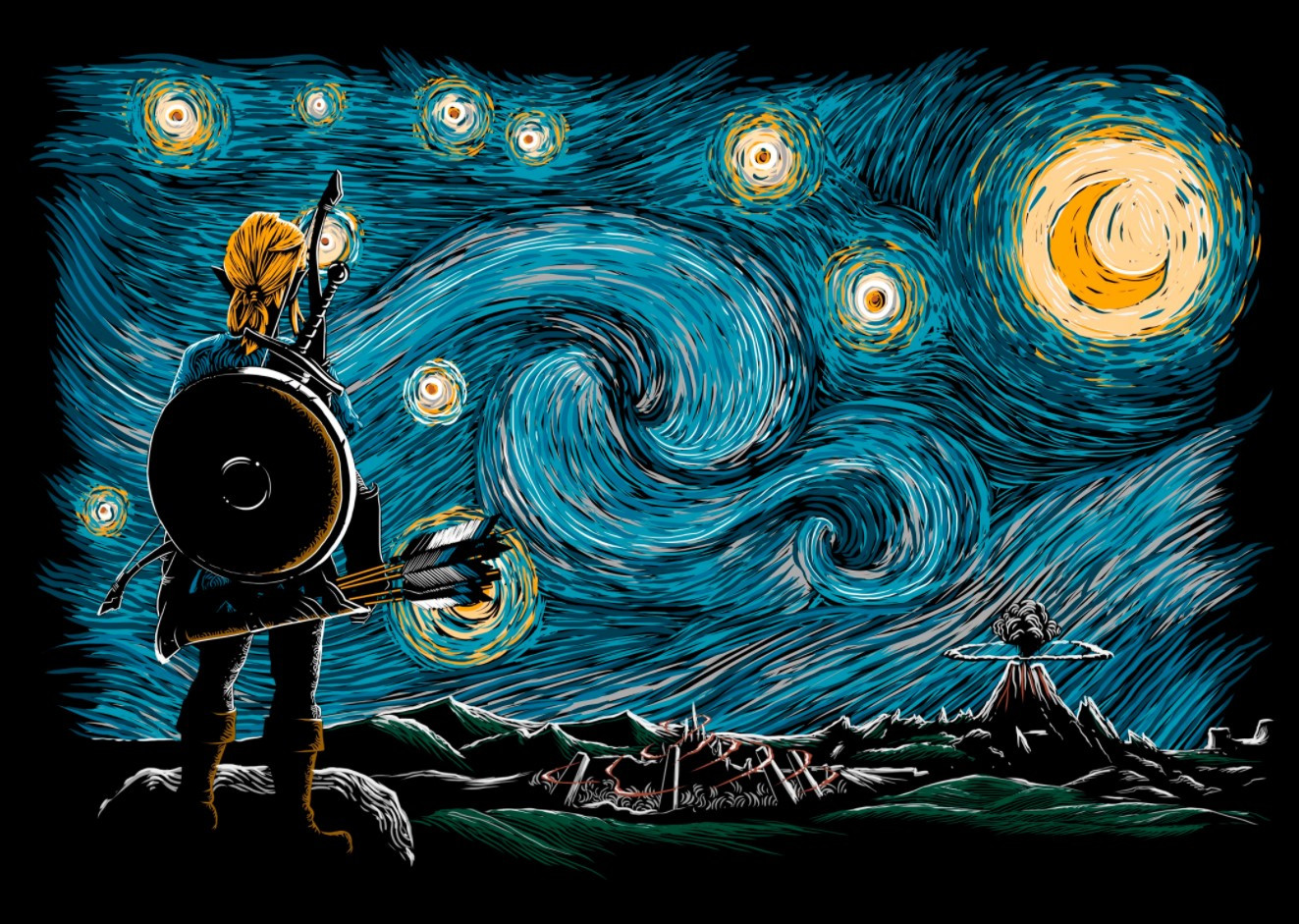Video Games are art. This thesis has as many followers as it has opponents. Why would someone call games a piece of art? What’s the difference between video game graphics and real paintings? What about storytelling in games and movies for example? The notion of art is it has to communicate something to its receiver. Therefore, it has a purpose. Do video games too?
What is art?
Let’s start at the beginning. What is art? Throughout the ages, art received many, many descriptions. An expression of human creative skills in a visual form, created to be appreciated mainly for their beauty or emotional power. Branches of creative activity. Skill acquired by experience, study or observation – to name a few. And yes, art is considered to have purpose – to evoke emotions, to embody an idea, to welcome some sort of reaction and experience. Movies, books, even music – they are completed works, ready to be experienced from start to finish. Everything matters in them, because it’s within their creative definitions, it’s their goal. They communicate something that the creator mostly intended to show (but there are times when other interpretations are welcome as well).
What about video games?
Taking into consideration the aforementioned definitions, you would say that indeed, video games are art. They are even more: they consist of mediums within a medium. Graphic artists are creating characters and levels, writers prepare story and narration and programmers are merging it into one. All of the parts can be considered an art of its own. But digging deeper, you might ask some crucial questions about video games. What about games that are made strictly for profit? What about the interpretation? What about the experience? You can’t experience video games the same as any other, completed works.

Video games are not art
Roger Ebert, a well-known movie critic, and screenwriter, made a distinction, that video games can’t be considered art because of their interactive nature.
One obvious difference between art and games is that you can win a game. It has rules, points, objectives, and an outcome. Santiago might cite an immersive game without points or rules, but I would say then it ceases to be a game and becomes a representation of a story, a novel, a play, dance, a film. Those are things you cannot win; you can only experience them.
Ebert’s thesis has met with agreement from a renowned game designer, Hideo Kojima (known for his cult classic Metal Gear series). In an interview for US Official PlayStation 2 Magazine several years back, Kojima acknowledged, that even though video games contain other artistic media, the main purpose behind them is to give all players 100% satisfaction. Art, on the other hand, is targeted at least on one person. Video games are made for a broad range of consumers, whereas art in comparison, is a niche. Kojima agreed, that creating video games is more of a service than an artistic process.
During The Art History of Games conference in Atlanta a few years back, developers behind The Path – a game named by some as an ‘art game’ – bolded, that games are not art. They argued that games evolved from play, which in turn, is just a basic, biological need. Art was not created out of biological need but in a search of higher purpose. Moreover, they emphasized, that nowadays game industry is focused more on gameplay mechanics rather than on artistic narrative, making games nothing more than a digital sport. They also took into consideration work in modern development teams that are divided in their artistic visions.
Aren’t they?
Some still consider ‘art-related’ side of video games as actual art. Compelling story, fully written characters, music – those aspects of a game can be called art. But between them is something that is watering down the whole experience. Gameplay. The act of interacting with the game world cancels the interpretation of the creator of the game itself. Sloppy playable sequences, frequently staying at odds with characters personality and the virtual world (take for example Nathan Drake – a happy go lucky adventurer in the cut scenes, and cold-blooded killer during gameplay). Games that have gameplay and story going separate ways works against calling video games an art. Some people struggle through gameplay elements just to get to another scrap of the cinematic development of the story – that’s their main motivator to even try to complete the game. So in other words: gameplay is seen as an obstacle course for its own sake, and art is just a reward.

Video games are art
Before diving into a more postmodern approach to this topic let’s check the legal status of video games as art. United States Supreme Court ruled that games are entitled to First Amendment protection.
Like the protected books, plays, and movies that preceded them, video games communicate ideas—and even social messages—through many familiar literary devices (such as characters, dialogue, plot, and music) and through features distinctive to the medium (such as the player’s interaction with the virtual world). That suffices to confer First Amendment protection.
Another legitimation of video games as art came in form of exhibitions held by the prominent museum. A number of video games were selected by Museum of Modern Art as a part of its permanent collection. Some of them are Another World (1991), Pac-Man (1980), Street Fighter II (1991) and Portal (2007). The main reason behind picking them was to showcase their specific design elements. Most of them are playable and ready to be experienced.
Which leads to a question: Isn’t it crucial to interact with art to understand it or get a meaning? The same goes for video games. To be honest, they’re going even one step further.
Video games are the only medium that allows participating in creator’s vision firsthand. Actually, it consists of three voices: the one of the authors, the game, and the player. Those who play the game are immersed in the world created by the author, closed within the constructs of rules and game logic. But the choices players make and the experience that follows them can be completely personal. If someone can observe someone else’s work and feel particular emotions or get reactions, then we’re talking about experiencing art.
Of course, not all video games have to be considered cultural heritage. Not all of them are created for that purpose, lots of them are made for profit. As for books and movies – not all of them can be described as such as well. Without mediocre products, there wouldn’t be a place for extraordinary titles, like Journey (2012) which might be even considered by some as high art.
Another issue that is usually wrongly stated is comparing video games to movies. Movies are calculated art: they are controlling its whole content except the interpretation, which becomes the task of an audience. Video games, on the other hand, are giving freedom (within a created world that is) to the players – by choosing their path, manipulating game space, choosing dialogues, playing styles – including interpretation as well. Comparing non-interactive medium to the interactive one misses the point. Well, maybe besides cut-scenes, because of their non-interactive elements. Interactivity in games allow for artistic exposition, it’s a different approach than in movies. Video games are the only medium that can actually tell their audience that they won’t progress if they are not good enough.
Expressing the art also takes place within gameplay. It means that player is the key element that allows for creative expression through the act of playing. Movies can’t connect with the audience the same way as video games do with players. Movies are self-contained, but games can’t be experienced without players. It’s also worth mentioning, that players experience games firsthand. They act and react to what’s going on the screen. There’s no other medium where the audience can express their progression and experience in the first person. It’s not ‘Link defeated Ganon’ it’s ‘I defeated Ganon’. It’s ‘I destroyed Metal Gear’. And so on. It’s exciting.
It’s a risky statement, but we can say that players are artists as well. Because of games’ dynamics and interactivity, they can shape virtual reality. They can express themselves through their actions within games. Richard Egbert said games can’t be considered art because of their rules and choices. Truth is, within games, choices are intentional. They are pre-programmed by creators (developers). A choice is a form of artistic experience – just as different interpretation of any form of art.

Playing for the stories diminishes video games as a whole experience. Yes, it would be ideal to justify game mechanics through narration all the time, but it’s not crucial to consider it a solid piece of players expression. They express themselves by overcoming challenges of the gameplay. It’s safe to say that games are sort of contests, a form of rivalry. Overcoming obstacles is well known artistic trope – especially in video games. They are the purest medium for such actions. Most of the time, gameplay has no connection to the story. But gameplay’s function is not to communicate with a player. Its role is to allow players to speak.

